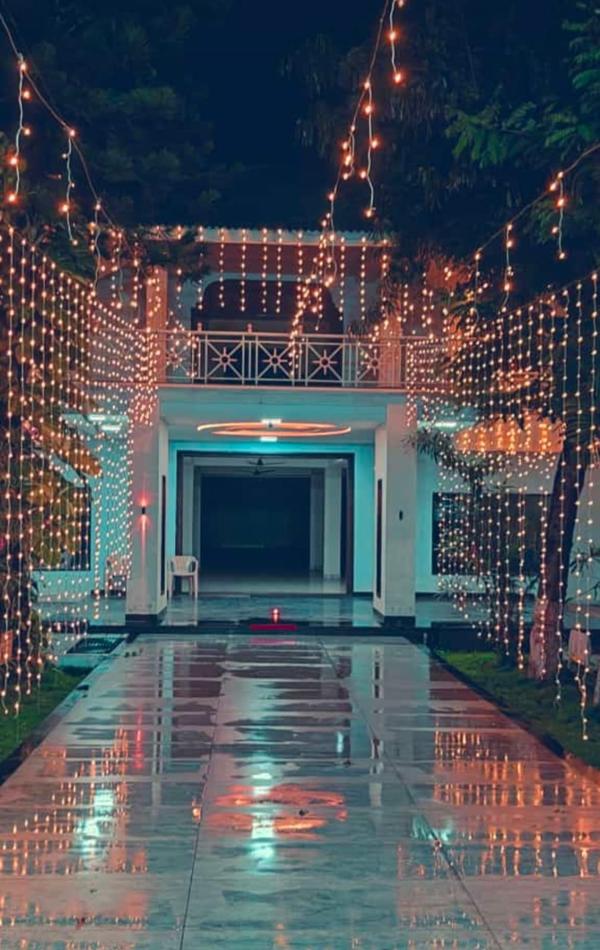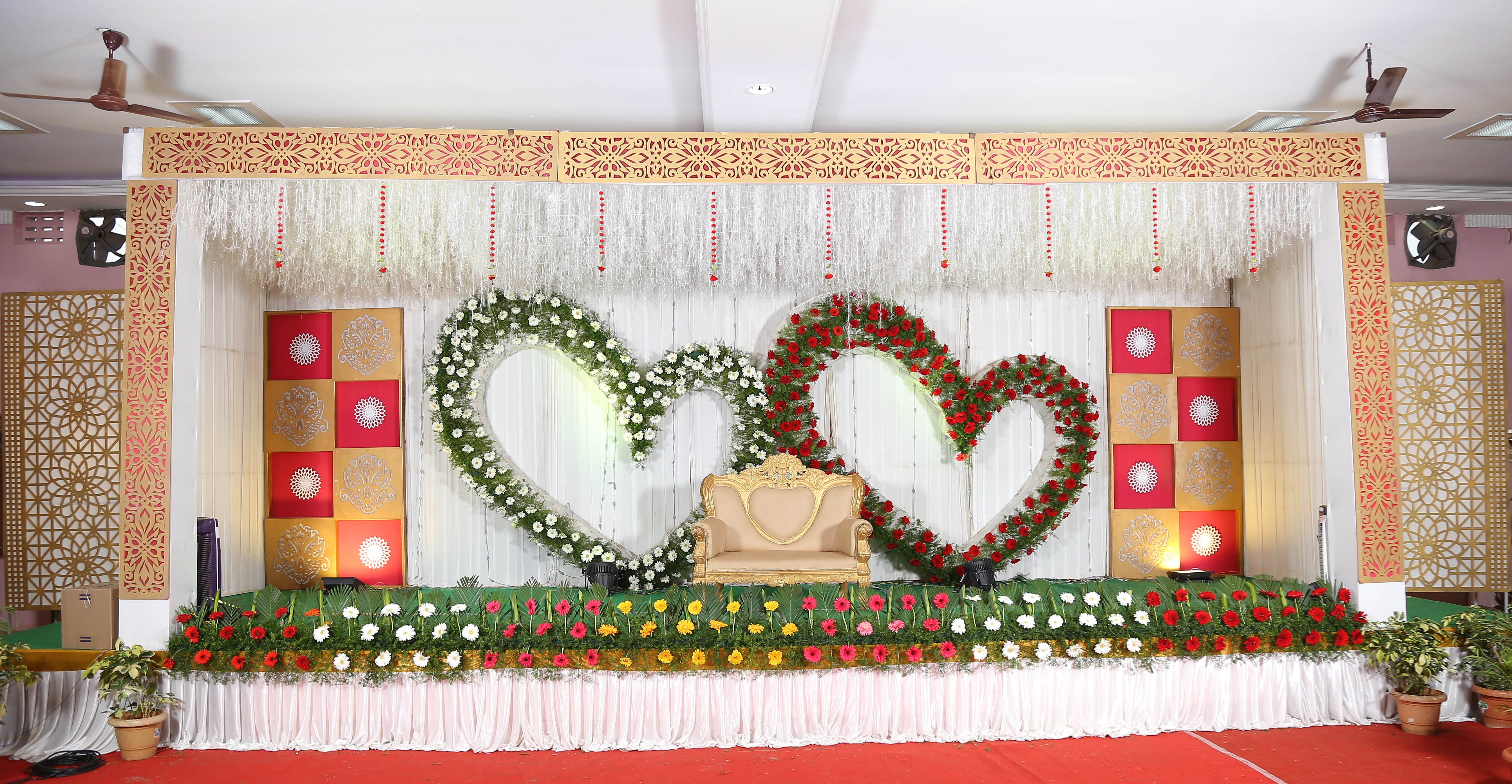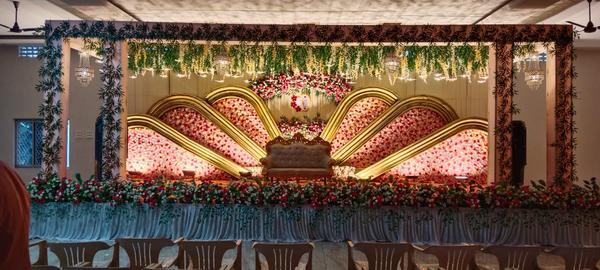

Pre-wedding Rituals NakshatraPorutham – Matching of horoscope are given utmost importance in a Tamil wedding. Horoscopes or nakshatrams are matched following Vedic guidelines based on twelve points or Poruthams like Nadi, Yoni, Rasi, Gana etc. The matching of horoscope determines a lot of factors for the impending wedding like the wedding date, precise moment for the wedding or muhurtha and other rituals as well. Marriage Agreement– The marriage agreement is drafted next by the priests on both sides once the marriage is fixed. A meeting is arranged at the groom’s house where the two sides exchange the marriage agreements by putting it on a platter containing a bunch of bananas, betel leaves, betel nuts and a coconut. Gifts are also exchanged between the families. Panda Kaal Muhurtham – This ritual is observed by the bride’s and the groom’s sides together. The two families visit a temple or may organize a special puja at one of the homes, and pray to the Almighty so that the wedding may happen without any obstacles. This is generally done on the day before the wedding. Sumangali Prarthanai – This is a special puja directed towards the Sumangalis or married women who take part during various rituals of the wedding. Generally these women are close relatives and family friends. The women, generally grouped in odd numbers like three or five or seven, gets decked up in traditional nine-yard Madisar sarees. After completion of the puja, the bride seeks blessings from each Sumangali and gives her some special gift like a saree or jewelry. They are also treated with special lunch. Pallikal Thellichal – Earthenware pots are decorated with vermillion and sandalwood paste by five or seven married women of the family or both the bride and the groom’s families. Inside each pot, nine different types of grains or navadhaanyam are placed along with a bit of curd. A Kolam or traditional south Indian sand art designs that are believed to be bringer of good luck, is prepared at a special spot within the house. Vrutham – This ritual takes place at the groom’s place on the early mornings of the day befor the wedding. The day signifies transition of the groom from the Bachelorhood or Brahmacharya phase of life to Domestic or Garhasthaya phase. He seeks permission from his guru, usually his father to proceed to this phase. A sacred thread, colored yellow with turmeric is tied around the groom’s wrists. In a similar ceremony or puja, a yellow thread is also tied around the bride’s wrists. This thread is said to protect the bride and the groom from evil energy. Naandi Shraddham – The groom’s family arrives at the bride’s place or the venue of the wedding on the morning of the day before. The bride’s family welcomes them with tray full of favors like sweets, betel leaves, betel nuts and fruits. The groom is especially welcome with a shower of rose water. A garland is put around the groom’s neck and a spot of sandalwood and vermillion paste is applied on his forehead. The bride and his family members are fed sweets prepared by the bride’s mother. After the welcome is done, ten Brahmins are invited over who take part in a ritual that offers appeasement to the families’ departed ancestors. The Brahmins are treated to traditional Tamil vegetarian lunch and are given traditional two piece garments (veshtiangavastram) along with betel leaves, betel nuts, coconut, fruits and sweets. The Brahmins bless the couple and wish them a prosperous life ahead. Nishchayathram – This is the formal engagement ceremony in case of a Tamil wedding. The ritual begins with a puja to lord Ganesh at the bride’s home. The groom’s family arrives at the bride’s house. They gift a beautiful saree to the seated bride and also some jewelry. They then apply a spot of sandalwood paste and vermillion on the bride’s forehead. The sumangalis from both sides come and fill up the free end of the bride’s saree with rice, fruits, coconut, flower, turmeric, betel nut and betel leaves. An arti of the bride is performed while a floral garland is tied around her waist. The bride’s family also performs a similar ritual and gift new clothes to the groom. The bride and the groom then change into these new clothes. If the rituals permit, the couple may exchange rings after they have changed. Lagna Pathirikai – The ritual involves announcement of the wedding and offering verbal invitation to the wedding. The family priests after consulting the couple’s horoscopes come up with the most auspicious moment of carrying out the wedding which they formally draft in the lagnapatrikai. The lagnapatrikai is supposed to clearly outline the names of the family members, the bride and the groom’s, the marriage date and the precise marriage time. This time of the wedding or the Lagna is announced in front of all the family members of both the bride’s and the groom’s side. The lagnapatrikai is examines and signed by the heads of the two families. Following this gifts are exchanged between the two families.
Keywords
Subscribe for latest offers & updates
We hate spam too.


